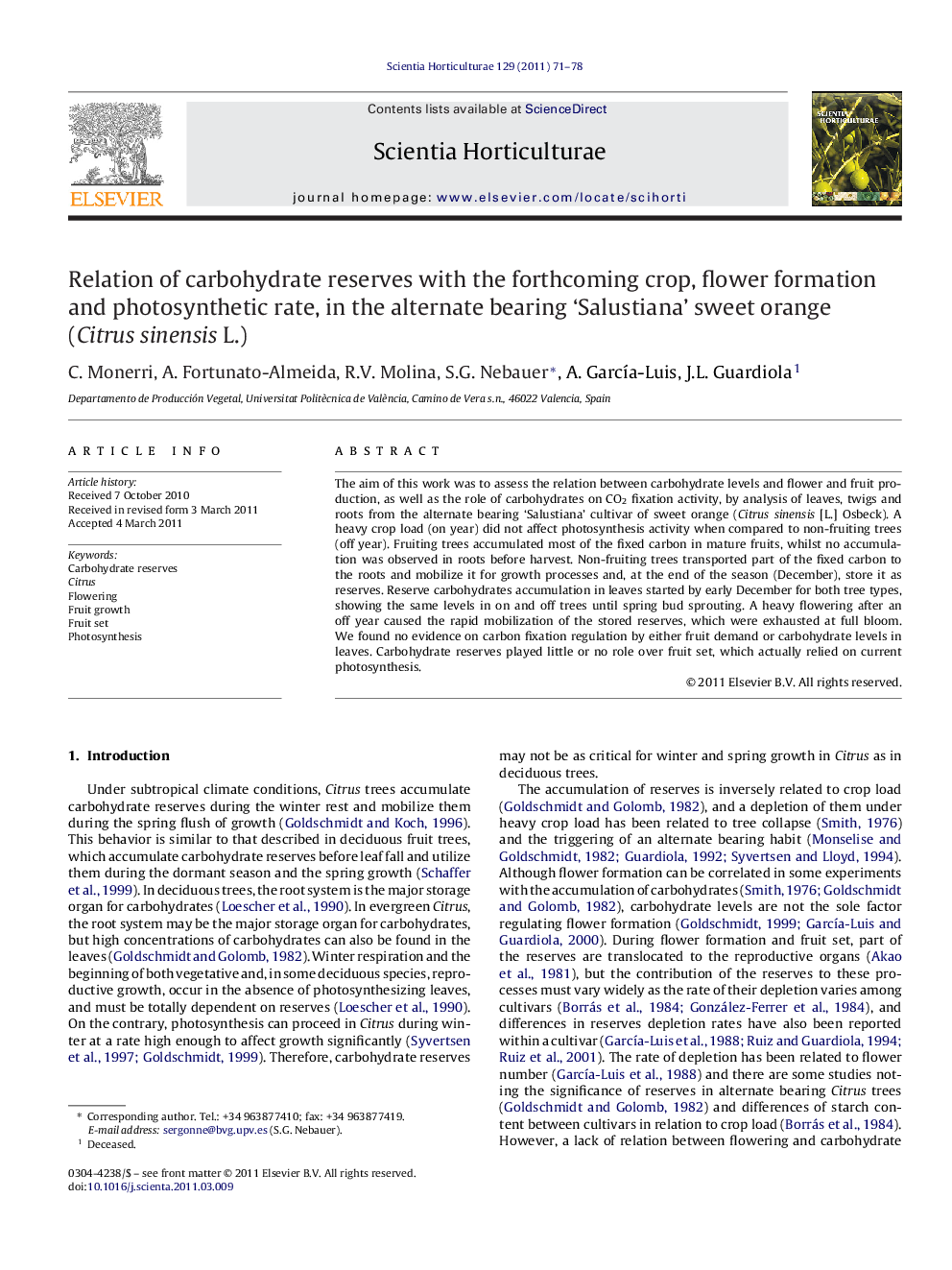| Article ID | Journal | Published Year | Pages | File Type |
|---|---|---|---|---|
| 4568067 | Scientia Horticulturae | 2011 | 8 Pages |
The aim of this work was to assess the relation between carbohydrate levels and flower and fruit production, as well as the role of carbohydrates on CO2 fixation activity, by analysis of leaves, twigs and roots from the alternate bearing ‘Salustiana’ cultivar of sweet orange (Citrus sinensis [L.] Osbeck). A heavy crop load (on year) did not affect photosynthesis activity when compared to non-fruiting trees (off year). Fruiting trees accumulated most of the fixed carbon in mature fruits, whilst no accumulation was observed in roots before harvest. Non-fruiting trees transported part of the fixed carbon to the roots and mobilize it for growth processes and, at the end of the season (December), store it as reserves. Reserve carbohydrates accumulation in leaves started by early December for both tree types, showing the same levels in on and off trees until spring bud sprouting. A heavy flowering after an off year caused the rapid mobilization of the stored reserves, which were exhausted at full bloom. We found no evidence on carbon fixation regulation by either fruit demand or carbohydrate levels in leaves. Carbohydrate reserves played little or no role over fruit set, which actually relied on current photosynthesis.
► Winter carbohydrate reserves are used up during the spring flush of growth. ► Root reserves did not contribute to fruit nutrition. ► Fruit set and development depends on current photosynthesis. ► An effect of leaf carbohydrates or fruit load on photosynthesis was not observed. ► Carbohydrate reserves do not play a regulatory role in flower development.
